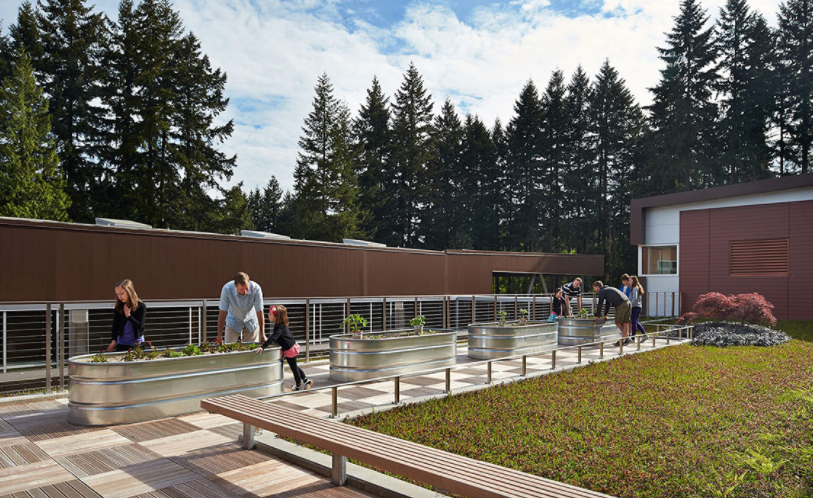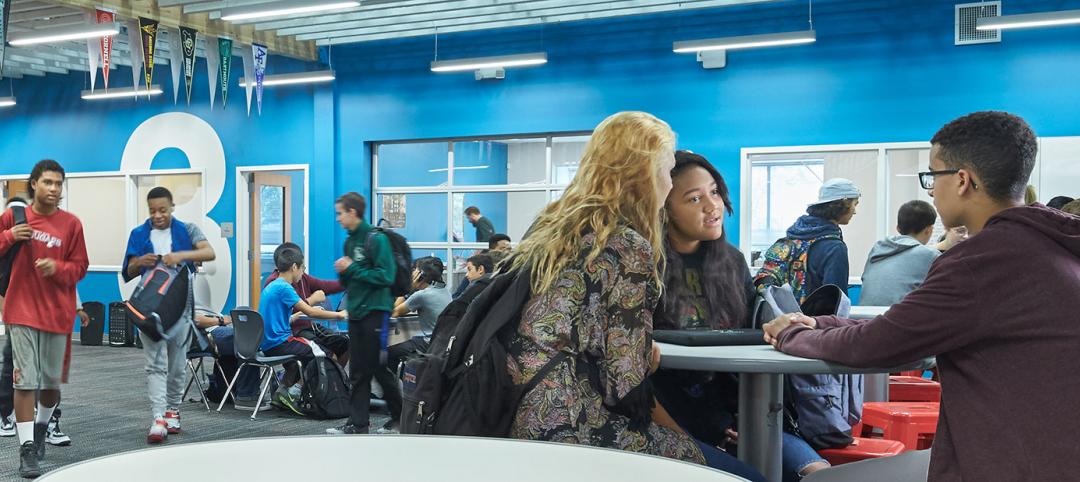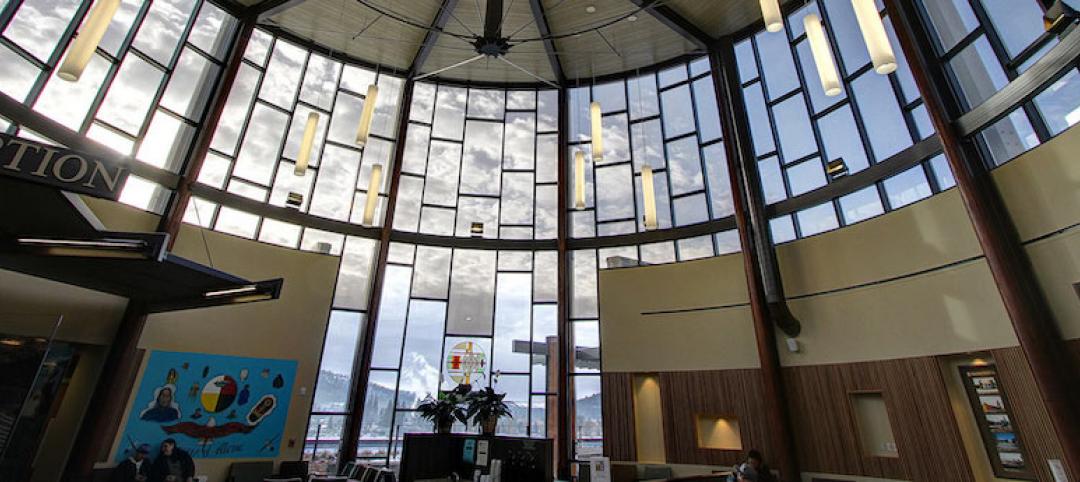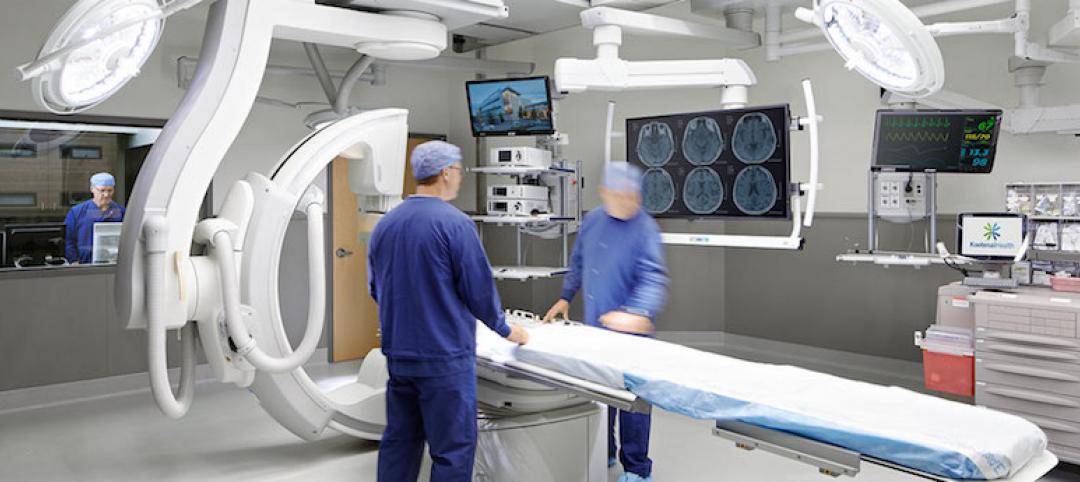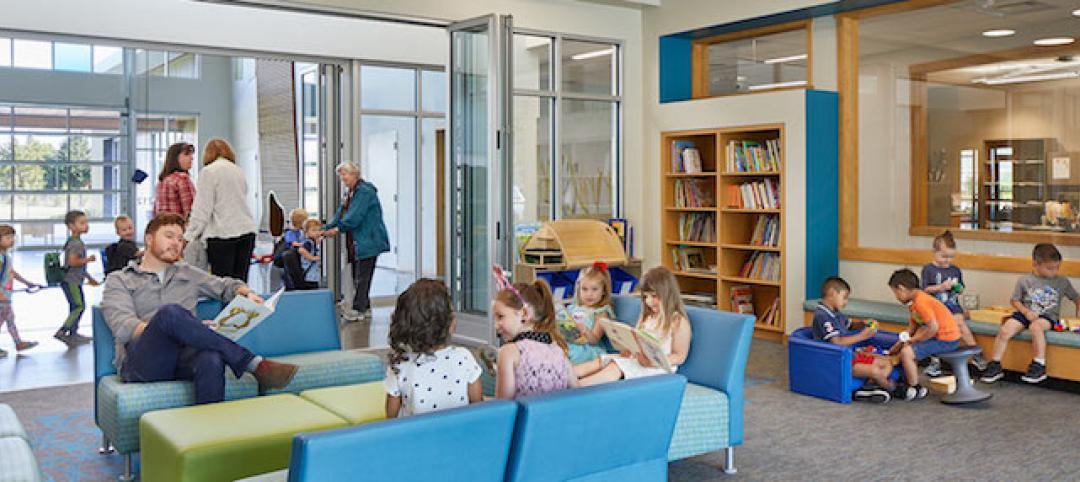The future of learning environments starts with the teacher. They are the facilitators to their students’ education, the curators of learning, and they play a crucial role in the next generation’s growth. Teachers are at the front line of education innovation, and they are well aware that the physical environment can make or break creativity and innovation. So how are we, as architects, using the physical learning spaces—formal and informal—to assist our teachers’ creative development as instructors? How can the educational environment further strengthen our children’s growth and learning?
Initially, educators and designers believed that learning occurred inside the classroom with the teacher being the carrier of knowledge. Today, the idea that education happens only in the confined walls of a classroom has become outdated. The understanding that learning happens everywhere is driving the future of education and the facilities we are designing.1
Knowing this, the art of designing schools lies not in just understanding what makes a functional classroom, but in how successful we are in creating a wide array of educational options for teachers and students within the school environment. A variety of spatial opportunities, indoors and outdoors, provides teachers the literal and figurative space to explore, experiment, and tailor lessons to the needs of the students and the curriculum.
‘Education must shift from instruction to discovery — to probing and exploration …’
— Marshall McLuhan, educator and communications theorist
Learning Happens Everywhere
Learning linked with meaningful experiences has been shown to significantly improve retention.2 Providing meaningful educational opportunities in a wide variety of settings helps teachers make sure that learning can happen anywhere. For example:
A Terrain of Learning. Weaving the natural environment of the site into the school building can provide learning opportunities that engage students through exploration and play. At Riverview Elementary classroom neighborhoods face the wetland that claims a large portion of the campus. A winding trail carves a path through and around the wetland where botanical signage identifies native plants and lookouts provide places for pause and observation. A timeline of the site's geological history is embedded in the porous concrete pathway around the playfields, chronicling ancient periods of local glaciation.
Educational Wayfinding. At Playa Vista Elementary a treasure hunt of sustainable initiatives on campus was created to teach students about native vegetation, sustainable practices, and environmental stewardship. A large etched brass panel describes 20 different sustainable strategies implemented throughout the school and directs students to areas on campus where they can see the strategies in action.
Learning in the Garden. At Cherry Crest Elementary, raised planter beds on the roof garden provide an opportunity for students to grow fruits and vegetables, while studying the science of nutrition, horticulture, and the importance of soil, effects of erosion and the water cycle.3
Tracking Energy Use. As a sustainable prototype for the Renton School District, the Secondary Learning Center utilizes LED accent lighting throughout the school to track energy and water use. The lights change color to reflect the level of resources being used in different sections of the building in real time, encouraging both staff and students to be engaged in sustainable practices.
Trigger the Senses. Using color, light, and materials incorporated throughout the school facility, and simultaneously encouraging hands-on learning, can play a powerful role in a student’s growth. At Summit Sierra, the use of vibrant colors, large wayfinding graphics, glass garage doors and flexible shared spaces support the student-centered, self-directed learning approach. The physical space supports inquiry-based education where students are enabled to drive their own learning. Environments rich in sensory experiences—sound, smell, taste, touch, and movement—helps students retain and retrieve what they learn.4
Science as a Way of Life. North Central High School infuses STEM education throughout the daily experience of students, both inside and outside the classroom. The building promotes a truly immersive learning environment, with students "becoming" scientists as they trade their backpacks for lab coats when they enter class. The students consider themselves scientists because they do genuine research in biogenetics, in an inspiring architectural environment that celebrates their passion for learning and discovery. This reinforces the program's belief that the more students can visualize themselves in a research role, the more likely they will be to step into the role in the future.
In part two we will look at the idea of the “third teacher” and what we as designers can do to help teachers take full advantage of the opportunities we’ve created for them in and with their school building.
We’d love to hear your thoughts. Send us an email: NACLab@nacarchitecture.com.
References
1 James, Darren L., AIA, and Nestor Infanzon, FAIA, RIBA. "'Smart' Spaces Aren't Just for Classrooms Anymore: Intentional Design Creates Casual Learning Opportunities on Today's Campuses." Educational Facility Planner 44.4: 19-21. Web. http://media.cefpi.org/efp/EFP44-4James-Infanzon.pdf
2 "Evidence of Effectiveness." Linked Learning. Web. http://www.linkedlearning.org/about/linked-learning-in-california/evidence-of-effectiveness/
3 O'Donnell, Sean, and Jana Silsby. "Building Teaching Tools." School Planning & Management. 1 June 2014. Web.https://webspm.com/articles/2014/06/01/sustainable-teaching.aspx
4 OWP/P Architects, VS Furniture, and Bruce Mau Design. "Trigger the Senses." The Third Teacher: 79 Ways You Can Use Design to Transform Teaching & Learning. 2009. 177. Print.
More from Author
NAC Architecture | Apr 11, 2024
The just cause in behavioral health design: Make it right
NAC Architecture shares strategies for approaching behavioral health design collaboratively and thoughtfully, rather than simply applying a set of blanket rules.
NAC Architecture | Jan 26, 2023
6 ways 'choice architecture' enhances student well-being in residence halls
The environments we build and inhabit shape our lives and the choices we make. NAC Architecture's Lauren Scranton shares six strategies for enhancing well-being in residence halls.
NAC Architecture | Aug 4, 2022
Faculty housing: A powerful recruitment tool for universities
Recruitment is a growing issue for employers located in areas with a diminishing inventory of affordable housing.
NAC Architecture | Feb 24, 2020
Design for educational equity
Can architecture not only shape lives, but contribute to a more equitable and just society for marginalized people?
NAC Architecture | Aug 22, 2019
Holistic wellness: What we can learn from Native American healthcare practices
Are there existing organizations that have already addressed some of these issues that we can study and learn from?
NAC Architecture | Dec 7, 2018
Planning and constructing a hybrid operating room: Lessons learned
A Hybrid operating room (OR) is an OR that is outfitted with advanced imaging equipment that allows surgeons, radiologists, and other providers to use real-time images for guidance and assessment while performing complex surgeries.
NAC Architecture | Nov 7, 2018
Designing environments for memory care residents
How can architecture decrease frustration, increase the feeling of self-worth, and increase the ability to re-connect?
NAC Architecture | Oct 8, 2018
One size doesn't fit all: Student housing is not a pair of socks
While the programming and design for these buildings all kept a holistic living/learning experience at the core, they also had amazingly different outcomes.
NAC Architecture | Sep 12, 2018
Security vs. 21st century learning: We shouldn’t have to choose
In order to effectively talk about school design, we need to start by understanding what a school is designed to do.
NAC Architecture | Jul 6, 2018
Building for growth: Supporting gender-specific needs in middle school design
Today, efforts toward equity in education encompass a wide spectrum of considerations including sex, gender identity, socio-economic background, and ethnicity to name a few.

